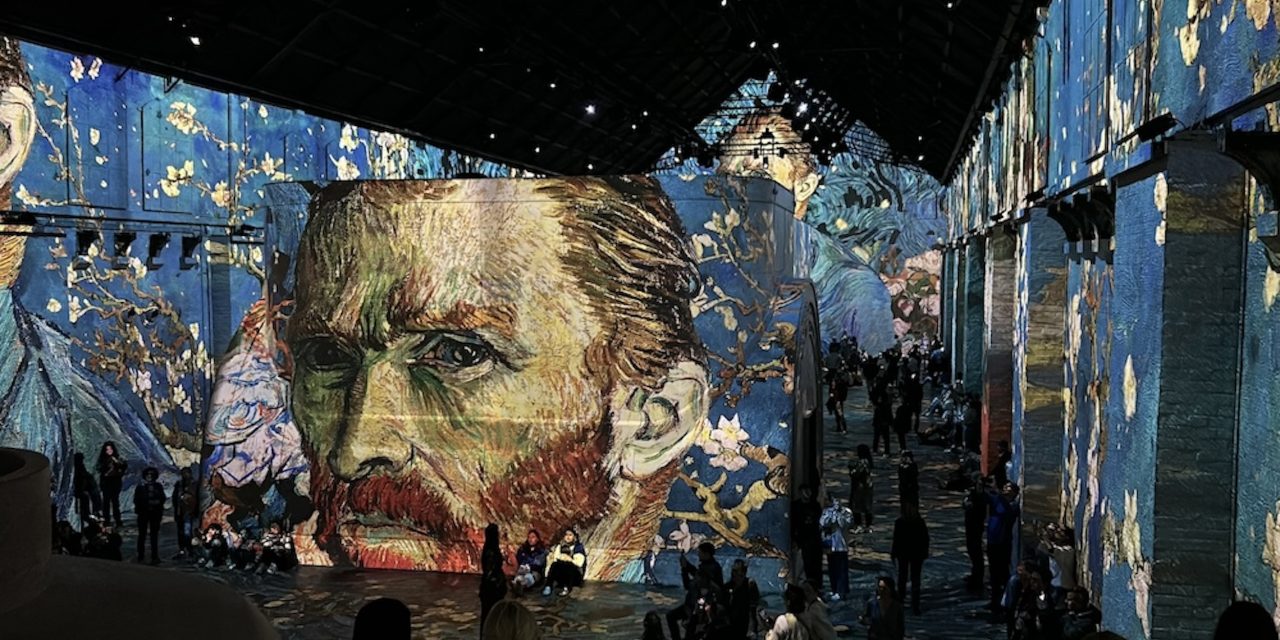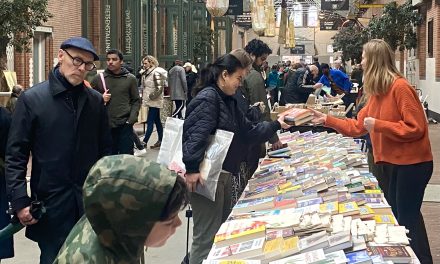Contemporary art is transforming with new media, becoming increasingly interactive and participatory. As Mara Dărămuș, project manager at the Plan B Gallery in Berlin, argues, more and more artists are using technology and artificial intelligence to experiment and express themselves in innovative ways. In this context, is the new media a tool used by artists to attract a larger and younger audience?
Galleries dedicated to immersive art are popping up in major cities around the world. When you walk into such an exhibition it’s usually full of people admiring and appreciating the evolution of technology and how art combines creativity with exact science. You walk into a large, dark hall and are surprised by the thousands of colors and lights that surround you 360°. Sounds and visuals help you enter into a story, where you don’t just stay with what you see, but also with what you hear.
Defining new media art
New media art is a new form of expression used by artists who use interactive techniques to create works that are different from traditional art, stimulating more senses. Its main characteristic is the involvement of technology as well as in the way the audience interacts with the work. This includes: immersive art, interactive installations, virtual or augmented reality, artificial intelligence, video art, generative art and more.
Revolution of new media art
Artists have been using illusion to create the sensation that the painted space is real since ancient Rome. An example is the Great Frieze in the Villa of the Mysteries at Pompeii, where murals are life-size and surround the viewer, transforming the room into a 360° ,,projection”. This type of visual expression anticipated, in a primitive form, the idea of integrating the viewer fully into the work – as immersive exhibitions such as those dedicated to Van Gogh do today.
Nowadays focus
Stimulating interaction with digital art to evoke a multi-sensory experience has become a defining characteristic of modern art consumption. More artists are exploring the boundaries between human and non-human through immersive and technology-based art. Visitors are no longer spectators; they are active participants. This shift towards non-traditional, digital immersive, and interactive art forms has undoubtedly narrowed the gap between the audience and the art itself, offering a more intimate experience. However, immersive and interactive art as a widely accepted medium remains an open question. Mark Zuckerburg, in 2021, claims that digital viewing methods such as augmented reality will soon replace art and media.
Why do new media exhibitions attract bigger audiences?
“Immersive exhibitions can be a gateway for audiences who are not comfortable with the more classical forms of contemporary art, often perceived as inaccessible or elitist.” – Mara Dărămuș
Thus, these visual and sensory experiences become a friendly form of introduction to contemporary art, especially for young people. From her point of view, exhibitions can also be seen as a way of attracting the general public to art, a public that may be discouraged by museums. A recent example in Berlin’s Plan B Gallery is Ran Zhang’s exhibition Dark Romance, which explores exactly this border zone between art, technology and personal experience. According to a study by Glimps, immersive art grew 22% over the past year, compared to the year before, putting it at a current volume of 86K searches per month, as of last month. Silviu Cioară is an artist from Romania who deals with applied art, creating installations for major festivals and sponsors.
“Artists have always been playing with technology, everything that has come into their hands, playing to see what they can do.” – Silviu Cioară
He says there is definitely a growth among artists for using technology as a method of expression. To put into perspective how immersive art compares to traditional art galleries and museums, take a look at teamLab, an art collective formed in 2001 by a group of artists in Tokyo. As of 2019, their Borderless museum is the most visited single-artist museum in the world. It welcomed 2.3 million visitors from over 160 different countries within one year of opening, attracting more attendees than the popular Picasso Museum in Barcelona.
Van Gogh exhibitions
In recent years, immersive art exhibitions dedicated to Vincent van Gogh have become increasingly popular in the US and Europe. The exhibition Van Gogh: The Immersive Experience has attracted millions of visitors from all over the world, offering a reinterpretation of the famous Dutch artist’s works. The exhibition uses technology (360° projections, sound effects and animations) to transform Van Gogh’s works into multi-sensory experiences. In 2023, according to its annual report, the Van Gogh Museum in Amsterdam recorded about 1.7 million visitors. The figure is still below pre-pandemic levels, when the museum exceeded 2 million visitors annually. In addition, the museum has an access cap of 5,000 people per day to protect the collection and maintain a quality experience. Immersive exhibitions, on the other hand, reach a much larger number of visitors in a shorter amount of time. For example, the Van Gogh: The Immersive Experience exhibition attracted over 1 million visitors in its first months of operation.
This contrast underscores a growing trend: immersive art is attracting larger and younger audiences. The interactive nature, the atmosphere and the ease with which the public can understand the artist’s world contribute to the success of these types of exhibitions. They do not replace the experience of going to a museum and seeing the works, but complement it and translate it into a contemporary language familiar to the digital generation.
The message of art has always been and will always be closely tied to our human experiences and with new technologies come new experiences, and therefore new issues that contemporary artists are interested in exploring and rendering in different media. So yes, with new technologies the message of art is also changing.




